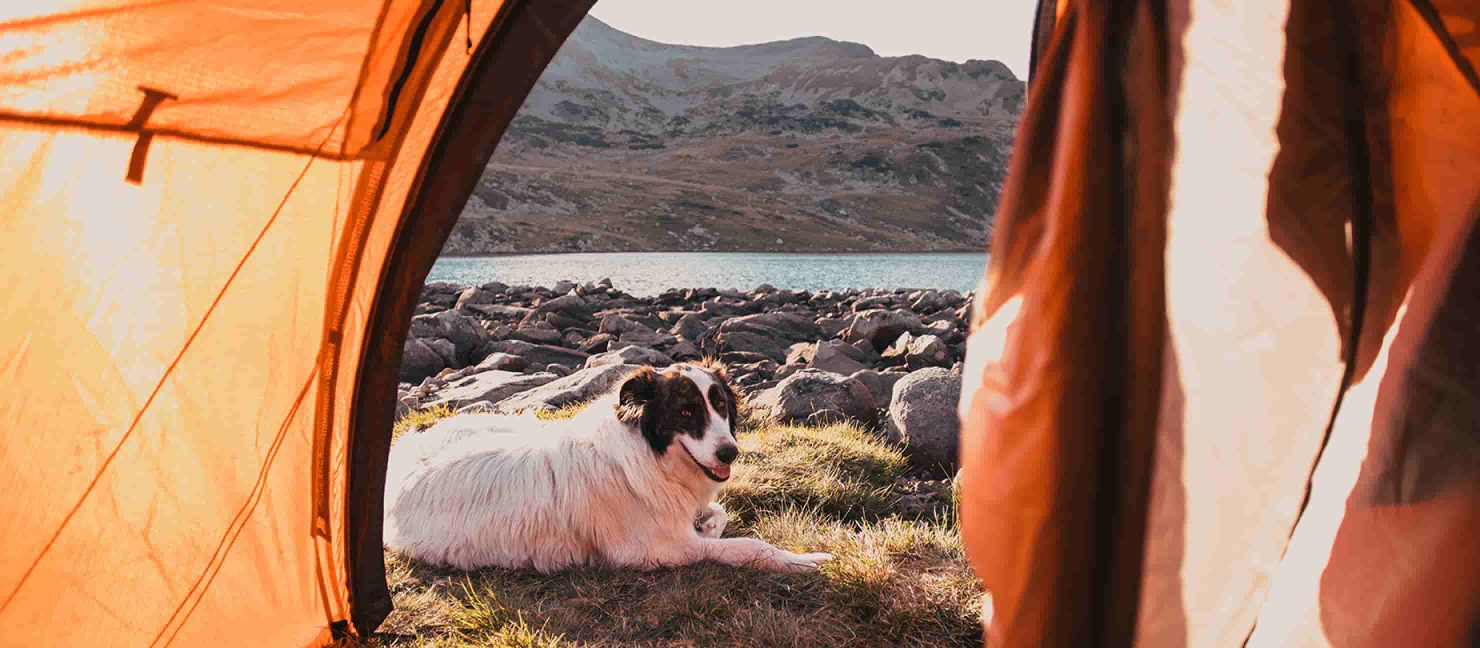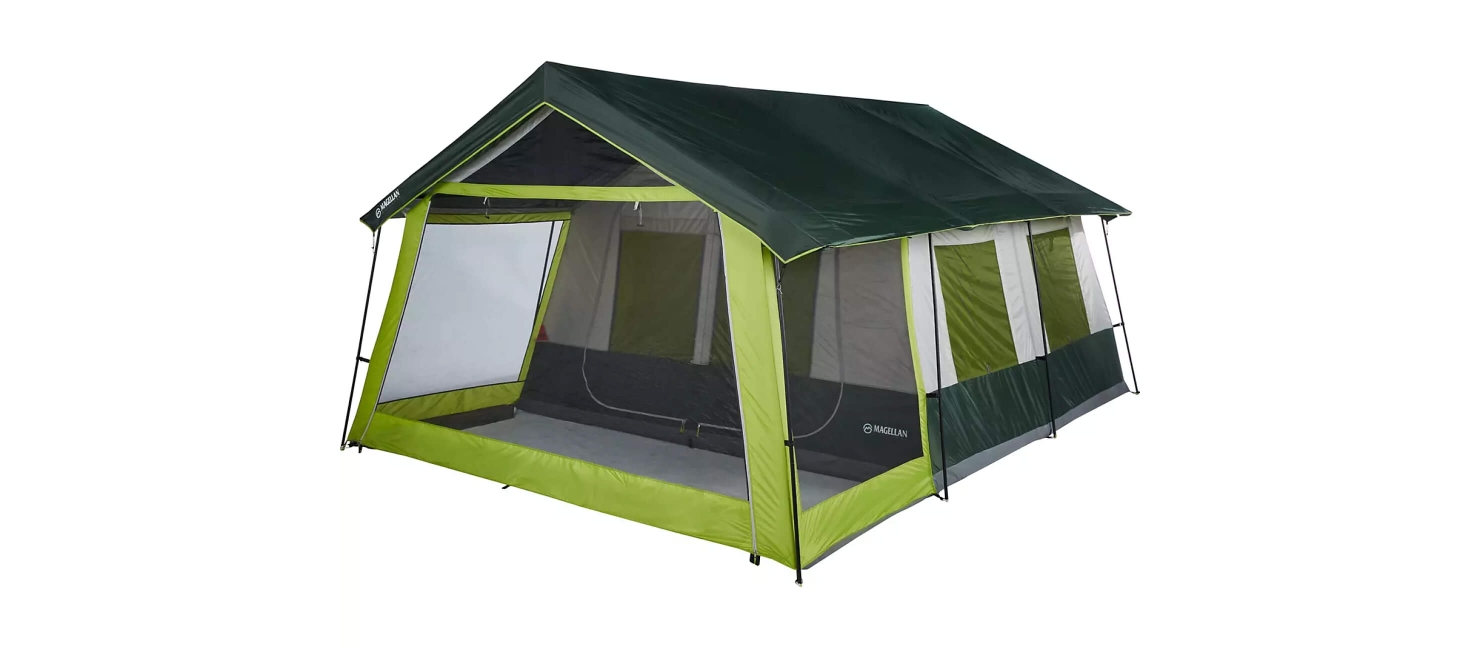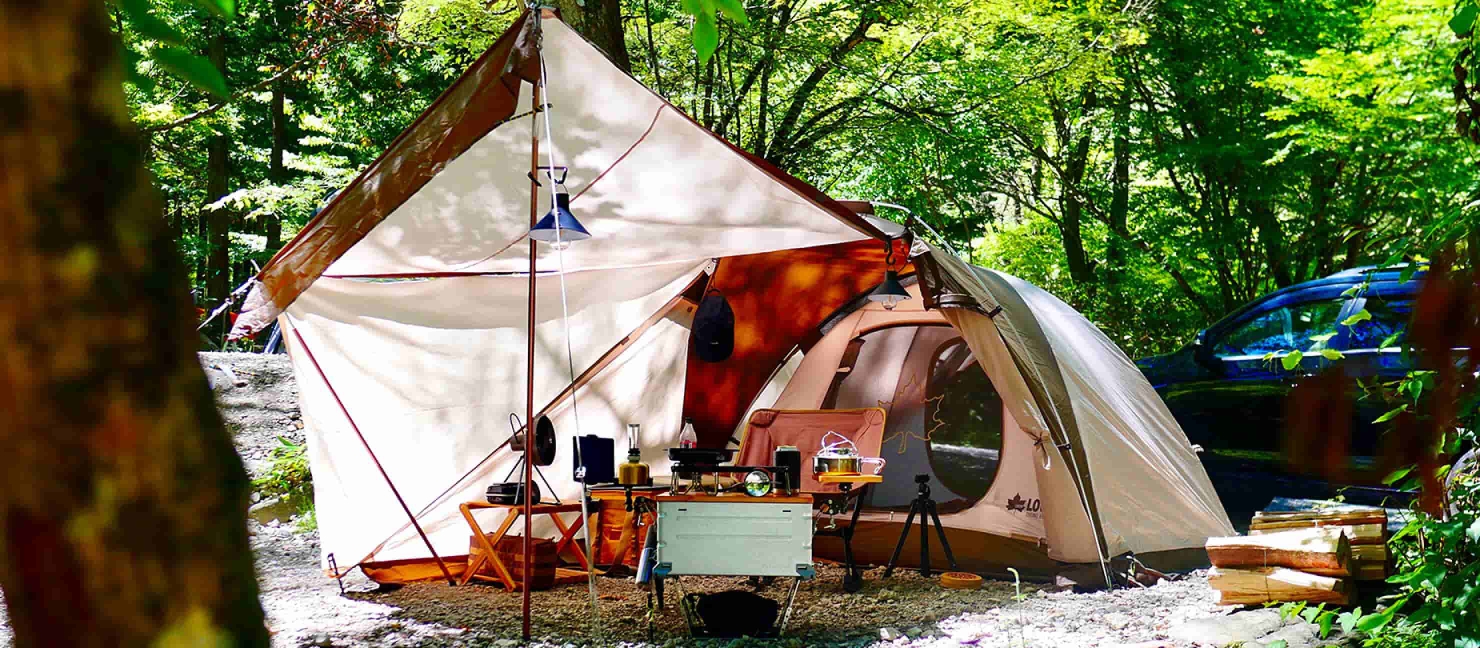Types of Camping Tents Guide for Your Next Adventure

Tents are the heart of every campsite. They keep you dry when it rains, help you sleep soundly through the night, and protect you from outdoor critters and crawlers to maximize your comfort and camping experience.
At Academy, we know first-hand how much fun camping should be — especially when you have the right gear! That’s where the perfect tent comes in. The right one can feel like your home away from home.
So how do you know which style is right for you, your family, and your camping needs? In this guide, you’ll learn about all the different types of features and other important considerations when choosing yours.
Types of Tents
Tents come in a wide variety of shapes, sizes, and color schemes — each complimenting a specific type of season and/or type of camping. There are a few different styles named for their specific shape and/or intended function.
Avid campers will often have multiple ones (like a backpacking or dome style): one for each type of trip they prefer to go on. However, buying a single one is a fantastic place to start as a beginner camper.
List of Tent Shape Types |
|||||
|---|---|---|---|---|---|
| Shape Type | Pitching Requirements | Pros | Cons | Ideal Use | |
| Cabin | 2+ people recom. |
|
|
Casual family camping | |
| Dome | 1+ people recom. |
|
|
Car camping | |
| Backpacking | 1 person |
|
|
Backpacking, hiking | |
| Truck | 2+ people recom. |
|
|
Smaller group camping | |
| Screen Houses | 2+ people recom. |
|
|
Car camping | |
| We abbreviated 'recommended' to 'recom.' | |||||
Cabin Tents
Cabin tents have higher ceilings and tall walls for maximum maneuverability for multiple people inside. This style is perfect for families, taller campers, and close-knit groups of friends.
Because of their increased size, they’re typically heavier — meaning it’s likely you’ll need at least two people to pitch these ones. Within the cabin style, you can also find other features like room dividers or even screened-in porches to keep everyone more comfortable.

Dome Tents
Dome tents are the most common ones available. Their construction is rather simple — a domed roof with crisscrossed support poles, though some manufacturers do opt to design theirs with unique features like extra doors and more storage. When it comes to tents for beginners, the dome style is usually the best choice:
- They’re lightweight
- They offer decent headroom for most campers
- They typically are easy to pitch

Backpacking Tents
Backpacking tents are made to travel with you on multi-day hiking trips or a long trek from the car to the campsite without weighing you down. They tend to only sleep one or two people since their primary function is to be lightweight while you hike or travel from one place to the next with ease. Some do feature extra weatherproofing for more comfort when you’re roughing it out on the trail.

Truck Tents
Truck tents are usually pitched over your truck bed for an elevated experience. They’re a great option for campers who love nature but want to keep away from rocks, sticks, and creepy crawlies. The most important thing to keep in mind with these is that you are limited to the number of people who can sleep comfortably in your truck bed due to strict weight capacities.
You’ll need to be mindful of where you’ll store your other gear. The best part of this style is you won’t have to spend time looking for a suitable space to set up. Anywhere you can legally park, you can camp!

Screen Houses
While they’re not strictly necessary for a great experience, screen houses can bring added comfort and shelter to your campsite. These large structures are made from a light mesh on all four sides and can be used to protect your gear, a picnic table, and more from the natural elements: heat, rain, and bugs. Screen houses don’t offer much privacy, so we don’t recommend them for sleeping.

Sleeping Capacity
In general, common tents are measured based on the number of average-sized sleeping bags occupied by people that they are capable of fitting comfortably while lying down shoulder-to-shoulder. Depending on certain factors like how much gear you bring, your body type/build, or if you just want some extra elbow room between each person sleeping, you may opt for the next tent size up.
Different types of tents with the same maximum sleeping capacity may not accommodate your family. For instance, the gear you bring (like a cot, thicker sleeping bags, etc.) might make it impossible to fit the allotted number of people due to size.
The shape sometimes makes certain areas of it awkward for sleeping. We recommend purchasing a larger size tent than the standard capacities listed on the packaging. That way, you’ll always have ample space.
Camping Tent Sleeping Capacity |
|||||||||||
|---|---|---|---|---|---|---|---|---|---|---|---|
| Manufacturer Suggested | Approximate Floor Space | Actual Recom. Capacity | |||||||||
| 2-person | 30-35 sq. ft. | 1 adult person or 2 children | |||||||||
| 4-person | 55-65 sq. ft. | 2 adult people | |||||||||
| 6-person | 90-120 sq. ft. | 4 people (family of 4) | |||||||||
| 8-person | 120-140 sq. ft. | 6 people (family of 6) | |||||||||
| 10-person | 150-180 sq. ft. | 8 people (family of 8) | |||||||||
| We abbreviated 'recommended' to 'recom.' | |||||||||||
Tent Seasonality Ratings
Seasonality is a subjective term based on individual manufacturer and retailer specifications. It calls out the appropriate weather conditions in which one is suitable. All beginners should consider purchasing a three-season one; most casual campers will see the biggest bang for their buck.
Tent seasonality is usually rated on a scale of one to five seasons: where one is a very basic, light tent intended for mild, warm weather conditions, and where five is an expedition-level (or professional-grade) one that can take on most — if not all — weather.
Tent Seasonality Rating Chart |
|||||||||||
|---|---|---|---|---|---|---|---|---|---|---|---|
| Seasonality Rating | Lining | Weight | Weather | Tent Type | Best Used For | ||||||
| 1-Season | Thin | Usually light | Clean, warm weather | Screen houses, Pop up tents, Instant beach tents | Beach camping | ||||||
| 2-Season | Thin | Usually light | Clean, warm weather | Basic camping tents | Summer car camping | ||||||
| 3-Season | Thicker | Moderate | Clear or wet warm, cool, or mildly cold weather | Common camping tents | Spring, summer, or fall camping | ||||||
| 4-season | Double | Usually moderate to heavy | Cold to very cold weather | Weatherproof and or waterproof tents | Winter camping, mountaineering | ||||||
| Expedition | Double | Heavy | Extreme cold weather | Professional-use tents | Professional camping | ||||||
Important Features & Considerations
Manufacturers use different materials and features when making different styles. These features focus on the type of camping you’d like to do and the climate where you’ll be camping most often. Generally, you’ll want to consider the following when looking for a tent for beginners:
Tent Use Purpose & Activity
Before choosing one, you should always know how you intend to use it — paying special consideration to the weather conditions and activities (like camping or hiking) you want to try out. These become even more vital when you go backpacking, where weight matters most. Bringing along the wrong tent can quickly sour your outdoor experience.
Weatherproofing or Weather Resistance Materials
Even campgrounds with the clearest forecasts, you should always have a rainfly for your tent. Most of the time, manufacturers will have this outer, rain-proof layer included with theirs. However, some may not. That’s why it’s so important to be mindful to know exactly what yours has BEFORE you leave home (or the city) for your next trip. Beyond a rainfly, look for specialized flooring or specific construction support for better wind resistance.
Peak Height
When choosing a tent, height is one of the most important considerations in terms of comfort. The right tent height doesn’t just stop at whether you prefer fully standing upright or if you don’t mind simply sitting up. Height or a lack thereof can make it easier or more challenging to move around, change clothes, and store your other gear.
At a minimum, we recommend always choosing one with enough height for you to comfortably sit up without slouching over. Depending on the construction, the tallest point may not be the overall height.

Tent Poles
Tent poles may be one of the more overlooked things people miss. If you intend to camp in windier sites, you should opt for stronger poles made with the right material. These days, most ones in-store and online come standard with either fiberglass poles or aluminum poles. Depending on if you are a more advanced camper, you’ll also find steel poles along with a few more premium materials.
- Aluminum poles: Stronger (and lighter weight) than fiberglass, these poles are better suited for stronger wind conditions. They are, however, often more expensive than fiberglass ones.
- Fiberglass poles: Less durable and heavier than aluminum, fiberglass poles are accessible and affordable while retaining the durability needed to accommodate most casual campsites.
Ventilation
Condensation isn’t a good thing when it comes to your tent. It makes items like your sleeping bags colder inside because the insulation likely will be compromised. Not only that, but you won’t be able to camp in true comfort when your condensation overwhelms the inside of yours. The air will feel noticeably muggy, and mildew can begin to form.
For these reasons, ventilation is non-negotiable for hot-to-warm weather and casual camping. Most of them will have ventilation flaps at the top to help prevent this issue.
Tent Doors
Tent doors become more and more convenient when camping with your friends or family. The last thing you’ll want to do is to have to climb over your other campers. That’s where having more than one door comes in handy! Most cabin tents have the best access in and out for ease and comfort.
Awnings/Vestibules
From mud to bugs, there are a few things you probably want to keep away from certain items not meant to weather the elements without an extra layer of protection. Awnings/vestibules help keep your extra gear away from the rain and wind as well as all the critters that crawl.
You’ll often find ones with front awnings; however, some do have side vestibules, too. While these add-ons aren’t a necessity, they can help add a layer of comfort as well as provide more convenience to the outdoor experience.

Interior Loops & Pockets
Most tents do not come standard with interior lights. That’s why we recommend choosing one that has plenty of extra interior loops and/or pockets! Lanterns fit quite perfectly on those loops, so you will be able to better maneuver around inside yours at night. These loops and pockets can also control the small-item chaos a bit better.
Have Fun Out There!
The right tent can make all the difference when you’re first exploring your camping hobby. Your local Academy Sports + Outdoors team member can be your in-store guide and walk you through our diverse selection to help you find the best one for you.
If you need more Expert Advice for your upcoming camping adventure, our Camping for Beginners checklist will help you make sure you have everything you need for a successful campsite. Find all your camping essentials online and in-store.
 Gift Cards
Gift Cards Hot Deals
Hot Deals Big Fun Deals
Big Fun Deals Clearance
Clearance